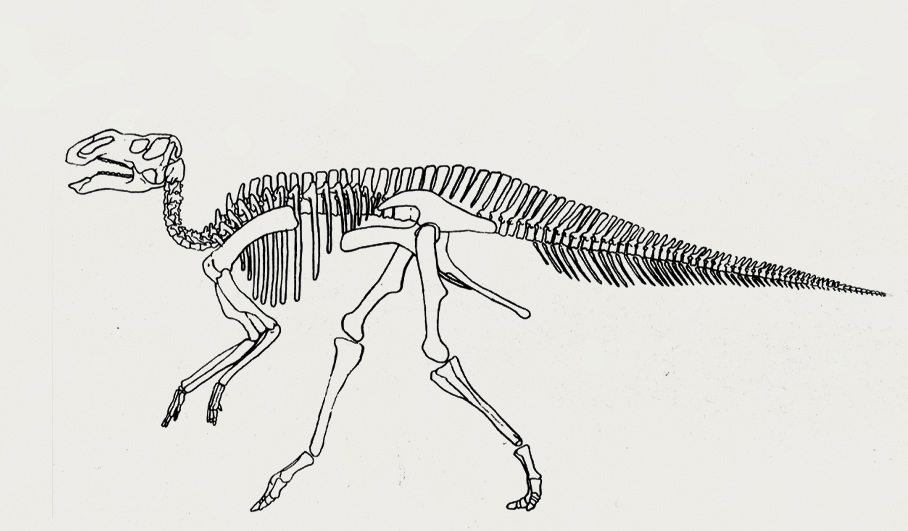DRAWING DINOSAURS


Any time you see an extinct dinosaur drawn with flesh on the bone and skin on the flesh, you are seeing an added bit of “science fiction.” Like the best science fiction, these drawings are based on fact, but a lot of imagination and guesswork goes into them. Bob Walters’ illustrations in this book represent various ideas about what dinosaurs (and other ancient beasts) looked like. In order to draw dinosaurs, Bob—and artists like him—go through the following steps:



![]() They reconstruct the skeletons of the dinosaur. Missing bones are restored based on comparisons with closely related dinosaurs.
They reconstruct the skeletons of the dinosaur. Missing bones are restored based on comparisons with closely related dinosaurs.



![]() They fill in the muscles of the skeleton. These are based on muscle scars found on bones, and/or on comparisons with living animals.
They fill in the muscles of the skeleton. These are based on muscle scars found on bones, and/or on comparisons with living animals.



![]() They place skin over the muscles.
They place skin over the muscles.



![]() They “clothe” the skin in scales and/or feathers. All dinosaurs had scales on parts of their bodies, but the exact shape and pattern of the scales is known for only a few species. Also, in the late 1990s it was discovered that some (if not all) of the small, swift meat-eating dinosaurs had feathers, or hair-like “protofeathers.” Scientists currently have specific knowledge of some of the feathers found on small meat-eaters from only one geological formation in China. For now, the shape and size of these features in all other creatures is based on living species.
They “clothe” the skin in scales and/or feathers. All dinosaurs had scales on parts of their bodies, but the exact shape and pattern of the scales is known for only a few species. Also, in the late 1990s it was discovered that some (if not all) of the small, swift meat-eating dinosaurs had feathers, or hair-like “protofeathers.” Scientists currently have specific knowledge of some of the feathers found on small meat-eaters from only one geological formation in China. For now, the shape and size of these features in all other creatures is based on living species.



![]() They add color to the scales and/or feathers. Colors and patterns used by artists are pure speculation, because nature is full of all different colored animals. (For example, the skeletons of lions, tigers, and leopards are nearly identical, but they have totally different colors and color patterns. Without seeing the living great cats, we would never know of a lion’s mane, a tiger’s stripes, or a leopard’s spots.)
They add color to the scales and/or feathers. Colors and patterns used by artists are pure speculation, because nature is full of all different colored animals. (For example, the skeletons of lions, tigers, and leopards are nearly identical, but they have totally different colors and color patterns. Without seeing the living great cats, we would never know of a lion’s mane, a tiger’s stripes, or a leopard’s spots.)




But remember: Although we know what the skeletons of Tyrannosaurus and Velociraptor looked like, we will never know for sure how their outsides appeared. Unless, of course, Jurassic World turns out to be more than a story . . . .